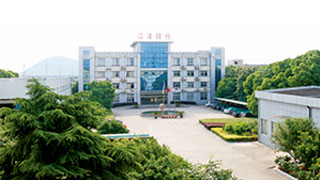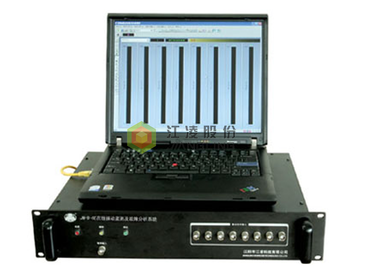 JM Series
JM Series
 Vibration monitoring and fault analysis system
Vibration monitoring and fault analysis system  Rotating machinery monitoring and protection device series
Rotating machinery monitoring and protection device series  Intelligent vibration monitor series
Intelligent vibration monitor series  Intelligent displacement monitor series
Intelligent displacement monitor series  Intelligent speed monitor series
Intelligent speed monitor series  Fan vibration monitor series
Fan vibration monitor series  Transmitter series
Transmitter series  Sensor series
Sensor series  Portable vibration measuring instrument series
Portable vibration measuring instrument series  STC digital turbine controller
STC digital turbine controller
 VMS series
VMS series
 VMS8000B condition monitoring system
VMS8000B condition monitoring system  VMS8000 condition monitoring system
VMS8000 condition monitoring system  VMS2000 dual channel vibration monitor
VMS2000 dual channel vibration monitor  VMS3110 anti rotation speed monitoring protector
VMS3110 anti rotation speed monitoring protector  VMS5000 fan vibration monitoring series
VMS5000 fan vibration monitoring series  VMS1000 transmitter series
VMS1000 transmitter series  VMS sensor series
VMS sensor series  VMS8000C condition monitoring system
VMS8000C condition monitoring system  VMS4000 four channel vibration detector
VMS4000 four channel vibration detector  Vms5500 condition monitoring system
Vms5500 condition monitoring system
 Rail fastener
Rail fastener
 Structural mechanics
Structural mechanics
 Video monitoring system
Video monitoring system
System specification
1. Open system overall design
2. Reliable hardware design
3. Convenient signal connection (related process parameters can be communicated from DCS and field intelligent instruments through RS232, RS485 or Ethernet).
4. Practical software design
5. Real-time monitoring and alarm
• Real-time monitoring of equipment shaft vibration, shoe vibration, speed, displacement, differential expansion, etc.
• Provide equipment running status parameter bar graphs and equipment simulation running graphs.
• Provide a display screen for the general frequency value of equipment vibration.
• Provide vibration amplitude trend graph, optional monitoring point vibration amplitude change trend.
• Provide time and rotational speed display.
• Provide equipment operation status display.
• Provide two-level alarm function for the vibration signal of each channel, and display the alarm status of the channel in a real-time list, the alarm is yellow, and the danger is red.
• Identify key phase signal status.
6. Historical data storage
• Store the original waveform data and important vibration characteristic data of the vibration dynamic signal during the daily operation of the equipment.
• When the equipment speeds up and down (start-stop state), the original vibration waveform and vibration characteristics are automatically stored according to the speed change rate, as important data files of the equipment.
• The storage of vibration characteristic data of each channel includes:
Frequency amplitude, intensity/gap voltage (eddy current sensor)
1/2X, 1X, 2X multiplier amplitude and 1X phase
• Provide the backup function of operating data and historical storage, and can extract important stage data for off-line analysis.
7. Accident recall and alarm file storage
• Record nearly 100 data of each channel of the system for alarming, switching on and returning to normal, including the name of the measuring point, time of alarm or recovery, speed, general frequency value and alarm status, etc.
• Provide alarm list display function.
• When the equipment changes from a normal state to a channel with an alarm state, the system automatically transfers to the alarm storage state, increasing the storage density, and will record the vibration characteristic data and original waveform data for a period of time (settable) before and after the alarm point appears .
8. Report printing
• Graphic printing and print preview functions are provided for monitor and analysis charts other than bar graphs.
• Provide the function of printing historical data of vibration characteristics and data report of speed-up and down-speed.
• Provide alarm list printing function.
9. Parameter setting
• Provide online operation parameter setting means.
• Provide channel information configuration means, including: channel name, sensor type, installation direction, full scale value, alarm upper limit, upper upper limit value and the same supporting surface channel pairing.
• Provide storage mode settings, set the timing storage interval and duration, the speed change rate of the constant speed change rate storage and the storage of the alarm file.
• Provide flexible display parameter settings for monitoring and analysis charts.
• Provide report printing settings.
10. Historical database management
It provides special management for the vibration history data of multiple starts and stops of equipment, and provides assistance for vibration control and predictive maintenance.
• Reproduce the vibration situation of multiple starts and stops of the equipment, and provide various analysis charts similar to the online monitoring system.
• Through database query, extract signs of vibration fault diagnosis, comprehensively compare vibration changes of equipment in different start-up and stop stages, and provide basis for fault diagnosis.
• Classified management of historical data (waveform, vibration characteristics, speed-up and down-speed data, alarm data, etc.). Provide convenient query, display, report printing and other functions.
11. Vibration fault analysis
The system provides a variety of online real-time vibration analysis functions for equipment in transient, steady state and alarm states. The system provides a total of 12 types of vibration data analysis charts: bar graph, data list, time domain waveform, spectrum graph, axis trajectory graph, Bode graph, trend analysis graph, coordinate graph, stacked graph, waterfall graph, two-dimensional holographic spectrum, Axis centerline diagrams, etc.
• Provide online operation parameter setting means.










